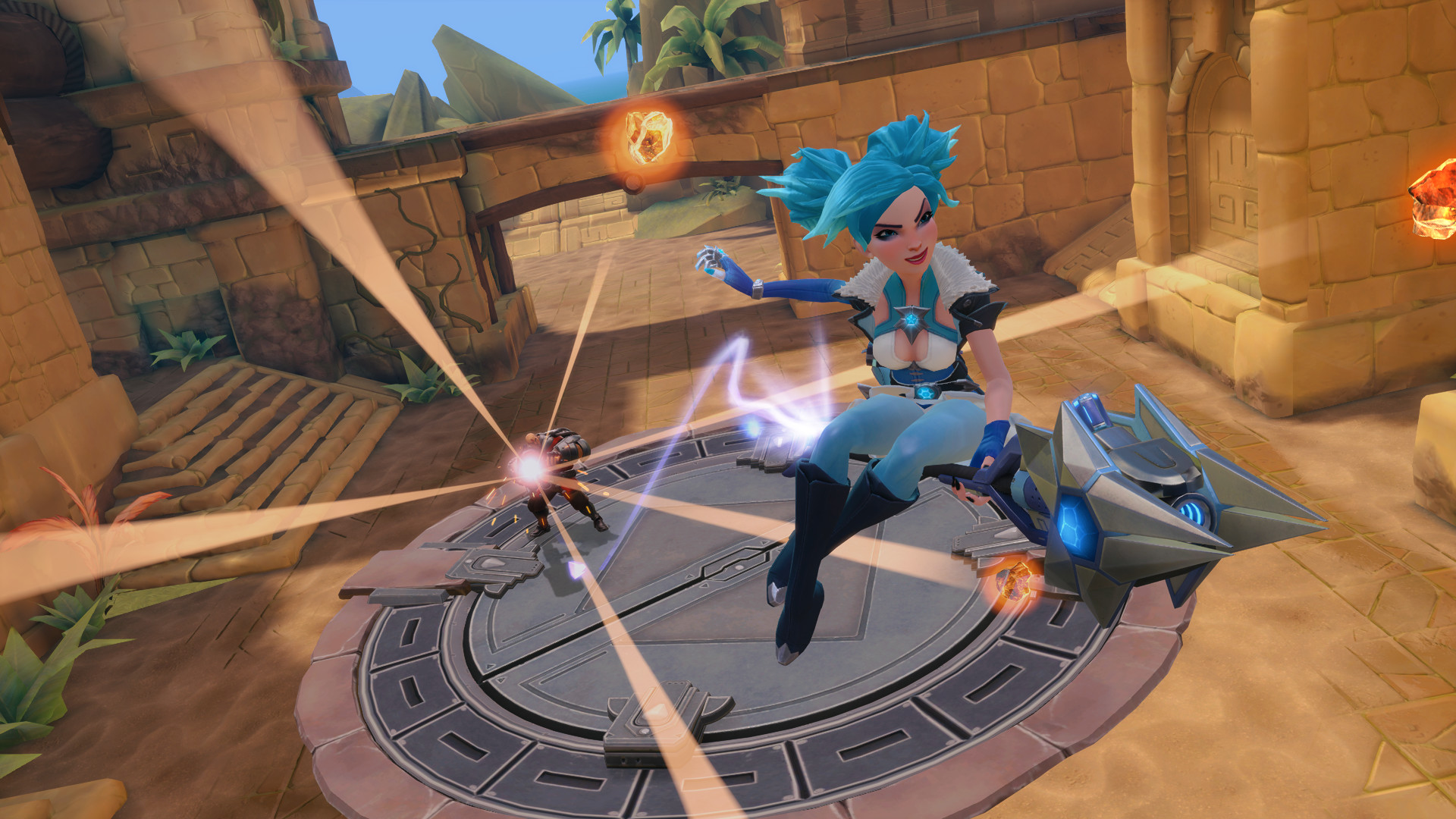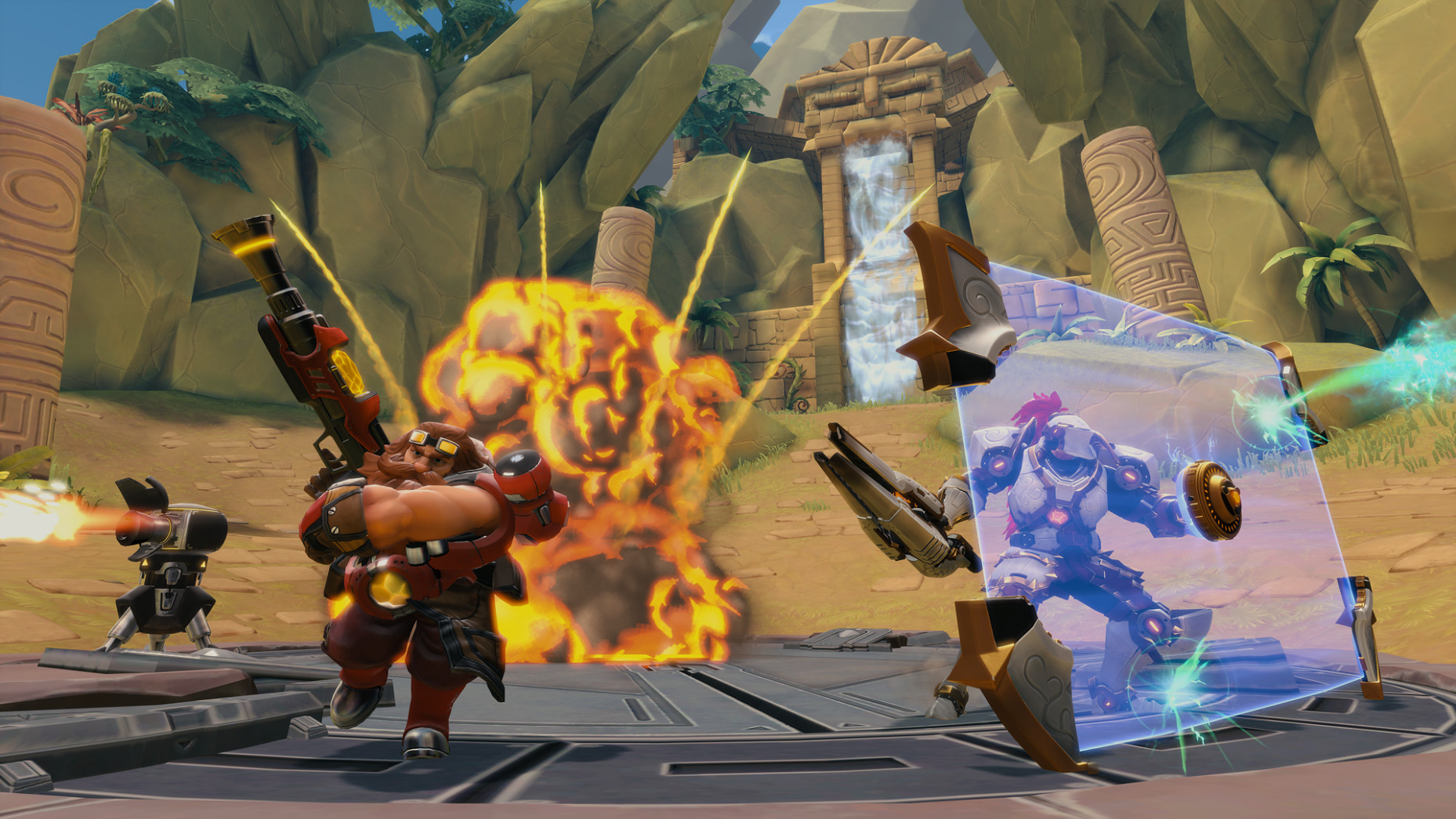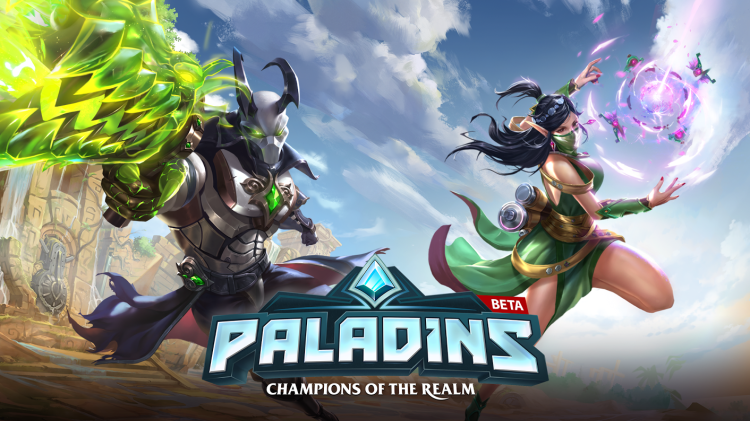Sure, Overwatch has made $1 billion dollars, but it isn’t the only team-based shooter that you should check out.
Paladins is Overwatch’s free-to-play counterpart. And while it may not be the giant success story that Blizzard’s team-based shooter has been since its May 24 launch, Paladins has still had more than 8.5 million downloads on PC. And its player base is about to grow thanks to Paladins’ recent open beta launch on PlayStation 4 and Xbox One.
Paladins has been in closed beta on PC since November 2015, but the open beta started last September. Millions have played it despite it not being an official release yet. It’s a big success for Hi-Rez Studios, which also created the free-to-play shooter Tribes: Ascend in 2012 and the free-to-play multiplayer online battle arena (MOBA) Smite in 2014.
GamesBeat interviewed executive producer Todd Harris about why Paladins’ console expansion, combating the Overwatch comparisons, and he believes so strongly in the free-to-play model.
June 5th: The AI Audit in NYC
Join us next week in NYC to engage with top executive leaders, delving into strategies for auditing AI models to ensure fairness, optimal performance, and ethical compliance across diverse organizations. Secure your attendance for this exclusive invite-only event.

Above: Kiki?
GamesBeat: Your open beta only started this week. How’s it’s going?
Todd Harris: It just started [May 3] on console. We’ve been in open beta now since September on the PC, but we just launched open on Xbox One and PS4 yesterday. So far so good. We’ve had great inflow of new players. We’re adding servers and waiting for community feedback. So far we’re pleased.
GamesBeat: You’ve been in closed beta for months now. Have you noticed any difference in the way console players play the game?
Harris: Not really? Retention in closed beta has been really strong. Our closed beta activity was probably around 25,000 daily active users on each platform. Enough to get a meaningful population. Response has been good. No significant differences from the PC.
GamesBeat: Was this always on the road map, to do the PC first and then move on to console versions?
Harris: In this case it was planned from the beginning. It’s different from our experience with Smite. In the case of Smite, our action MOBA game, we started with the PC version, and once it found success we looked at a console version. That meant doing a different user interface for the console and a few other things that were specific to the console that we hadn’t planned the first time around.
But with Paladins, being a first-person shooter — console audiences traditionally enjoy first-person shooters. We designed it with the idea that it would be multiplatform from the beginning. That includes having a common user interface between PC and console. Also, when it came to the design of champions and the feel of gameplay using a controller, we had console in mind from the beginning.
We just tend to start on the PC, because we’re very community-driven and iterative in our approach, especially in closed beta. PC lets us patch very frequently without requiring certification. We start on the PC until the gameplay finds itself, but then we release multiplatform. That was the goal from the beginning with Paladins.

Above: Paladins’ champions pack some serious firepower.
GamesBeat: You guys have experience releasing a free-to-play game on consoles with Smite, but the free-to-play market is newer there than on PC. Did the experience with Smite help you with launching Paladins on console?
Harris: It did. We’re definitely helping pioneer free-to-play on console. There are technical requirements. There are certification requirements. There are pricing and business model considerations, support for microtransactions, a whole host of things that we’ve worked closely with Microsoft and Sony on in the case of Smite to really, I guess, lay the pavement for free-to-play release and updates on console. Because of that, Paladins benefits. Again, both in terms of technology and also process.
GamesBeat: Do you have an idea of how much longer you’ll be in open beta?
Harris: No. Our expectation, if things go well, is that we would release this calendar year, in 2017, but we tend to be very metrics-driven and community feedback-driven as far as when we move to the next phase. A lot will depend on the reception we see in open beta.
GamesBeat: Do you find that the open beta concept is harder for console gamers to grasp?
Harris: I’d say that it’s true that — we wanted the open beta product to be a bit more polished. There is a higher expectation of overall quality, no matter what label the developer puts on it, beta or whatever else. I’d say we’re also still working to educate the console audience about how the game is actually free, or at least freemium. Even once we come out of beta, it’ll still be free. There’s still a bit of education there. Players of Smite and other free-to-play games understand that, but there are still console players who expect that they’ll have to pay $60 before they find out if they like the game. We don’t believe in that model.

Above: Kablooie!
GamesBeat: Why don’t you believe in that model?
Harris: One, for a multiplayer game, which is the type of game we make, these games benefit from having the largest player community possible. There’s a lot of reasons for that, but a simple example is matchmaking. If I’m playing a 5-vs.-5 game it’s the best experience when the teams are evenly matched. The system has an easier time doing that with a large population, especially when you start to also divide by, say, region. Sony’s European player base is segmented from the North American player base and so on.
Once you get into specific regions, the game is trying to matchmake and create a balanced experience, and it benefits from a larger population. It’s no fun to be on a side that’s not balanced. Well, maybe it’s fun one time, but it’s not fun over time. Second, we think that gamers these day ultimately — it’s the quality of gameplay that keeps them for the long term. If we can get them in the door with something free, rather than spending a lot of resources on a huge marketing campaign, that, again, allows us to put those resources into delivering quality gameplay.
The third benefit would be — if free-to-play is done right, not in a pay-to-win manner, it gives you basically infinite pricing flexibility. The person who enjoys the game, but can’t afford $60, can play for free. Someone who enjoys the game so much that it becomes a hobby and a passion and they really want to support it financially, they can do that. It’s a pretty flexible pricing scheme when it’s done right.
GamesBeat: Early on you drew a lot of comparisons to Overwatch. It seems like that’s not brought up as much now. Paladins has its own identity. Was that something you were planned for, or did that just happen on its own?
Harris: I think it’s just the internet being the internet. There’s an initial reaction when people just see a screenshot or a video. But I think it’s primarily because people who actually play the game, Paladins, they’ll acknowledge that it has some similarities to other team shooters, but to a person they’ll also say that it has a unique identity. There are champions in the game and systems in the game that are only in Paladins, most specifically the amount of customization around your play style. That’s unlike any other team shooter out there. Once they play it, people get an appreciation for that.
GamesBeat: You’re doing a console tournament for Paladins, which is unusual for team-based shooters. They all have competitions and esports events, but they tend to focus on the PC side. Why are you giving console players some of the spotlight?
Harris: Number one, we’ve run a console esports scene with Smite and we’ve seen that community respond. That’s in our background. We do believe there will be a good competitive appetite for Paladins on the console. The nature of the game is that we can’t really do cross-platform between PC and console and have fair competition. Keyboard and mouse is just not comparable to controller. But we can support a separate scene for people who want to play Paladins using a controller, whether an Xbox One controller or a PS4 controller. That’s why we’ve taken what’s a bit of an unusual position, supporting competition not just on one console, but on both of them.


